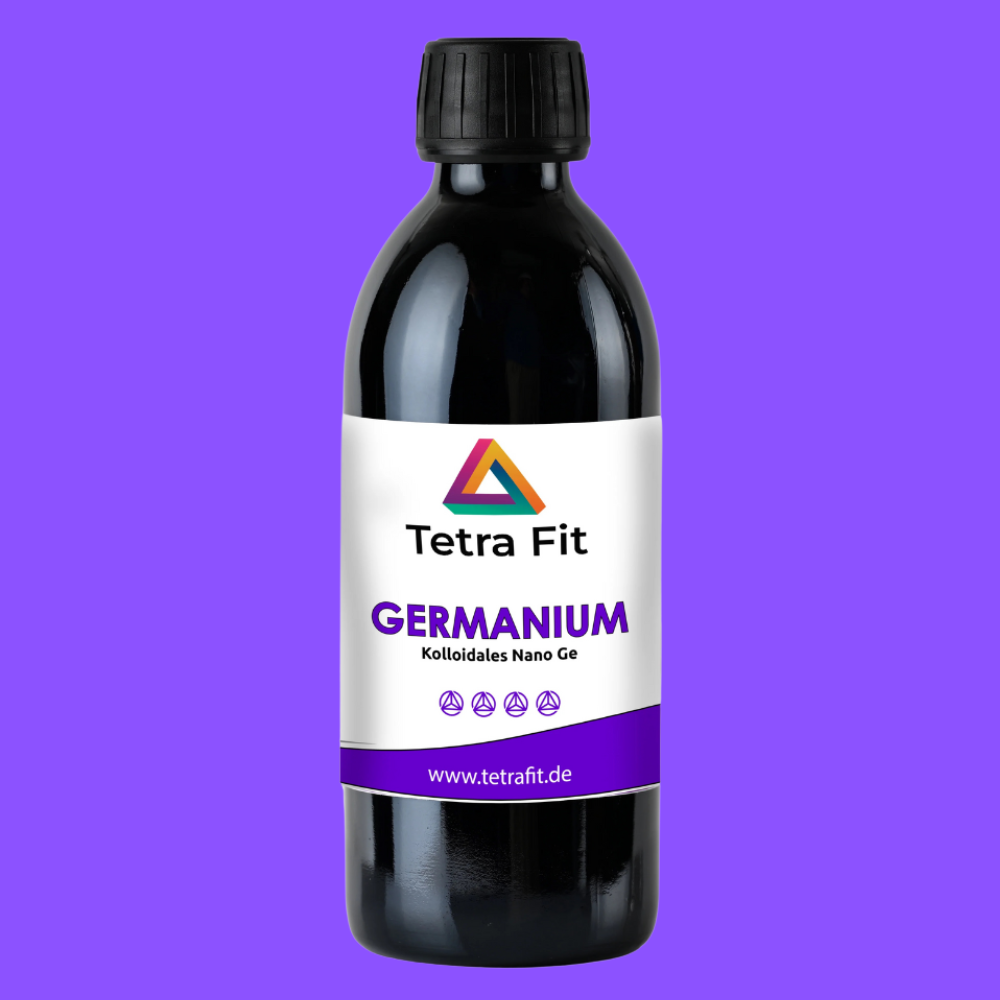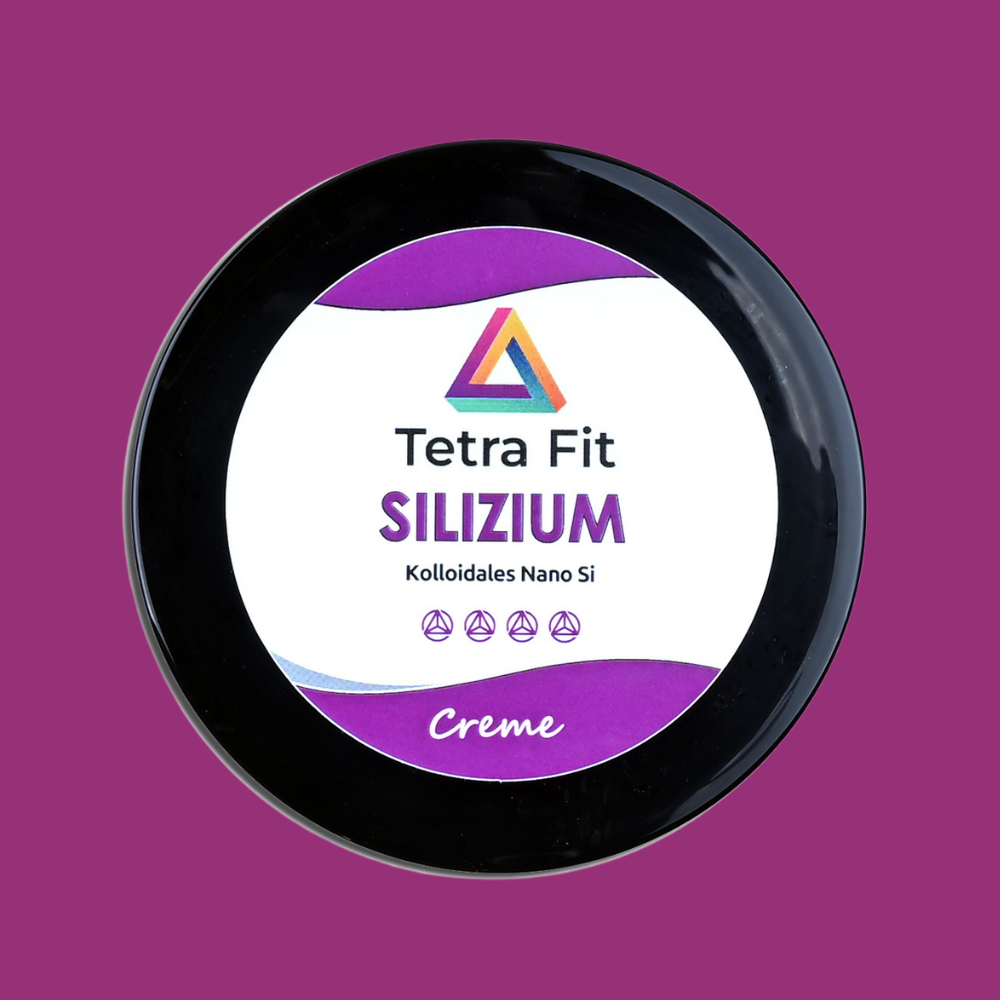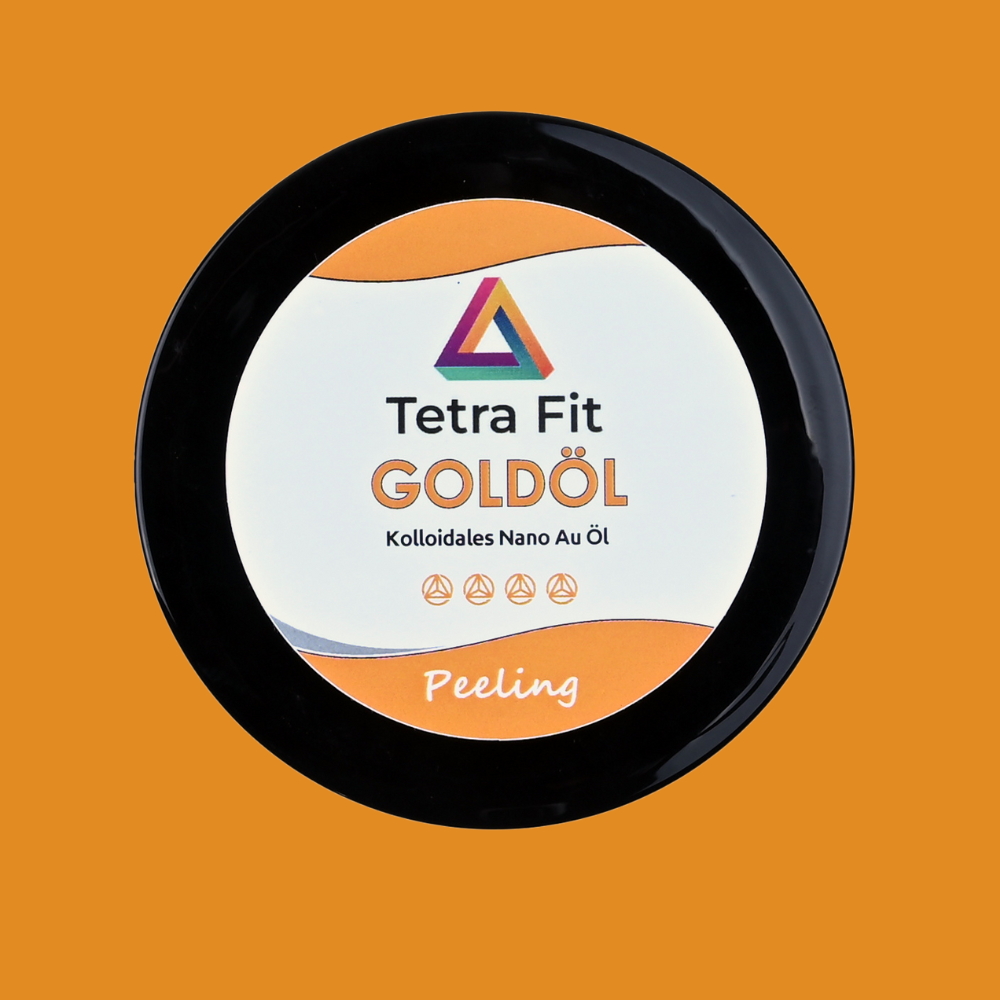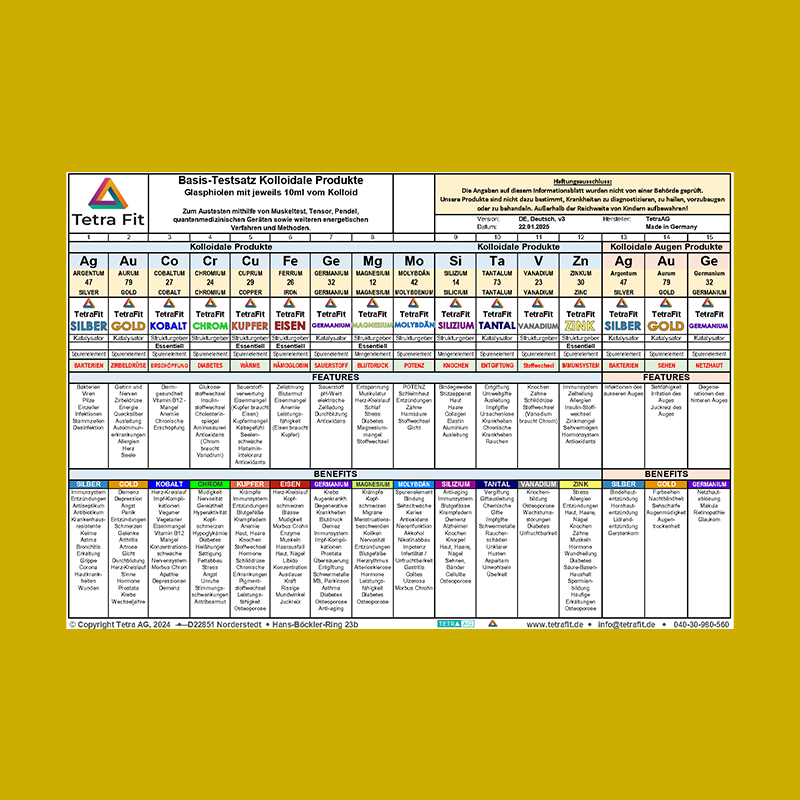TetraFit Vitamin C: The essential nutrient for the immune system, cell protection and well-being
February 11, 2025
Vitamin C (ascorbic acid) is an essential micronutrient that the human organism cannot synthesize on its own and therefore must be supplied exogenously. As a water-soluble antioxidant, it plays a central role in numerous physiological processes, including collagen synthesis, immune modulation and the neutralization of free radicals.
The need increases significantly, particularly in phases of increased physiological and metabolic stress - such as during pregnancy, breastfeeding, convalescence or oxidative stress. In addition, vitamin C acts as an important cofactor for various enzyme systems, promotes iron absorption and supports tissue regeneration. Adequate intake is therefore essential for the long-term maintenance of cell integrity and optimal physiological function.
The importance of vitamin C (ascorbic acid)
1. Essential nutrient
Vitamin C (ascorbic acid) is a water-soluble vitamin that the human body cannot synthesize itself. It must therefore be obtained through food or supplements. It occurs naturally in citrus fruits, berries, peppers, broccoli and other plant foods.
2. Antioxidative function & cell protection
Vitamin C is a powerful antioxidant that neutralizes free radicals. These are caused by metabolic processes and external factors such as UV radiation, environmental pollution or smoking. Due to its antioxidant effect, it protects cells from oxidative stress and contributes to the prevention of chronic diseases.
3. Collagen synthesis & wound healing
One of the most important functions of vitamin C is its role in collagen formation. Collagen is an essential structural protein of connective tissue, skin, tendons, cartilage and bones. A deficiency in vitamin C can therefore lead to delayed wound healing and weak connective tissue.
4. Immune function & infection defense
Vitamin C supports the immune system through various mechanisms:
- It promotes the production and function of white blood cells (leukocytes), which are responsible for fighting infections.
- It increases the activity of phagocytes, which absorb and destroy pathogens.
- It reduces inflammatory reactions and can reduce the severity and duration of colds.
5. Iron absorption & blood formation
Vitamin C improves the absorption of non-heme iron (from plant sources) in the small intestine. As a result, it may help prevent iron deficiency anemia, especially in vegetarians and people with increased iron requirements, such as pregnant women.
6. Role in neurotransmitter metabolism
Ascorbic acid is involved in the synthesis of neurotransmitters such as dopamine, serotonin and noradrenaline. This gives it potential importance for mental health as it is involved in processes that regulate mood, cognitive functions and stress responses.
7. Protection against cardiovascular diseases
Vitamin C helps lower blood pressure and improves the function of the endothelial cells that line blood vessels. It may also help reduce the oxidation of LDL cholesterol, which lowers the risk of atherosclerosis and cardiovascular disease.
__________________________________________________________________________________________
Linus Pauling and his role in vitamin C research
Who was Linus Pauling?
Linus Carl Pauling (1901–1994) was an American chemist, biochemist and peace activist. He is considered one of the most important scientists of the 20th century and received two Nobel Prizes – one for Chemistry (1954) for his work on chemical bonding and a Nobel Peace Prize (1962) for his commitment to opposing nuclear weapons testing.
Pauling was a pioneer in many areas of chemistry and biology, especially molecular biology, but later in his career he became particularly well known for his controversial theories on the health benefits of high doses of vitamin C.
____________________________________________________________________________________________
Linus Pauling and Vitamin C
In the 1960s and 1970s, Pauling began to study the role of vitamin C in the prevention and treatment of diseases. His main theses were:
1. Vitamin C for the prevention and treatment of colds
Pauling published the book "Vitamin C and the Common Cold" in 1970, in which he claimed that high doses of vitamin C (several grams per day) could reduce the frequency and severity of colds. This led to a worldwide boom in the use of vitamin C as a dietary supplement.
- Scientific consensus today: Studies show that vitamin C can slightly shorten the duration of a cold, but does not provide clear protection against infection.
2. Vitamin C as cancer therapy
Pauling later developed the hypothesis that high doses of intravenous vitamin C could play a supporting role in cancer treatment. In collaboration with Scottish physician Ewan Cameron, he conducted studies that suggested that vitamin C could prolong the survival of cancer patients.
- Scientific consensus today: Previous studies with oral intake failed to show any significant benefits. However, recent research suggests that high doses of intravenous vitamin C may affect tumor growth - this is currently being further investigated.
3. Orthomolecular medicine
Pauling was the founder of the concept of orthomolecular medicine , which states that diseases can be treated and prevented through a targeted optimization of the supply of micronutrients (vitamins, minerals).
- Criticism: The scientific community remained divided. While some researchers supported Pauling's views, others saw his theories as exaggerated or not sufficiently supported by solid studies.
____________________________________________________________________________________________
Vitamin C (A Chemical Consideration)
1. Molecular formula:
The chemical formula of vitamin C (ascorbic acid) is:
This means that the molecule consists of 6 carbon (C), 8 hydrogen (H) and 6 oxygen (O) atoms .
2. Structural properties:
Vitamin C is a water-soluble, organic molecule with the following structure:
- It contains a lactone ring structure , i.e. an oxygen-containing five-membered ring.
- An enol group (-OH on a double bond) provides its strong antioxidant effect.
- Several hydroxyl groups (-OH) make it highly soluble in water.
The semi-structured formula is:
3. Reduction and antioxidant capacity:
-
Vitamin C acts as an antioxidant because it can easily release electrons .
-
It is converted into its oxidized form, dehydroascorbic acid , but can also be regenerated.
-
The chemical reaction can be described as follows:
(Ascorbic acid releases electrons and becomes dehydroascorbic acid)
-
This ability makes it a protective molecule for cells by neutralizing free radicals.
4. pH value and acid properties:
-
Ascorbic acid is a weak acid (pKa ≈ 4.2).
-
In aqueous solution it can release protons (H⁺ ions) , which is why it tastes slightly sour.
-
The chemical reaction as acid:
(The molecule releases a proton and becomes ascorbate)
5. Isomerism & Biological Relevance:
- Vitamin C is present in the L-form (L-ascorbic acid), which is biologically active.
- The D-form exists but is not biologically active.
____________________________________________________________________________________________
Conclusion
Vitamin C is a vital micronutrient with numerous physiological functions. From supporting the immune system to protecting cells and promoting collagen synthesis, it is essential for health. A balanced diet with foods rich in vitamin C or targeted supplementation can help maintain optimal status and prevent deficiency symptoms.
TetraFit Vitamin C – Highest purity for optimal bioavailability
TetraFit Vitamin C consists of 100% pure ascorbic acid in pharmaceutical quality . Thanks to its highly pure form and positive elemental charge, it is absorbed particularly quickly by the body and can develop its full effect.
- High-quality, pure vitamin C (ascorbic acid)
- 40 g powder – ideal for individual dosing
- Optimal bioavailability & rapid absorption
Learn more & order: 👉 T e t r a F i t vitamin C








Leave a comment